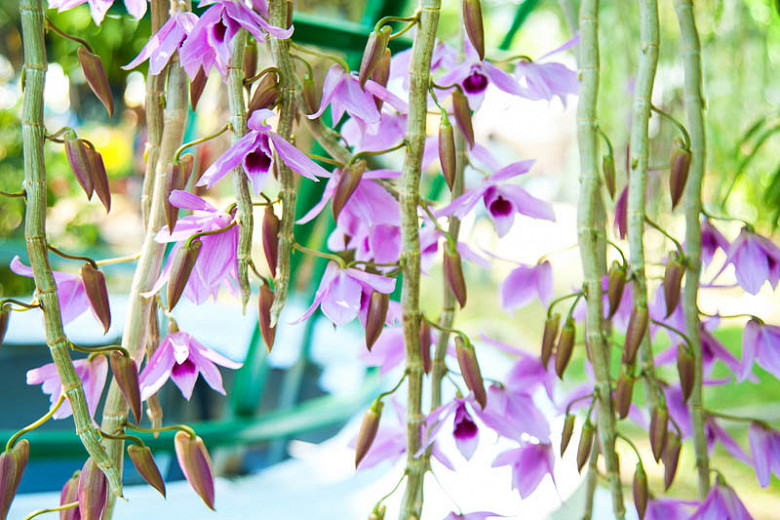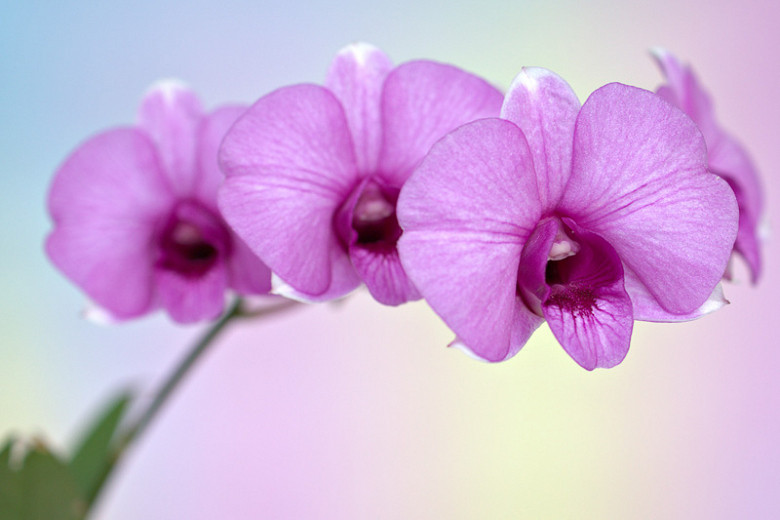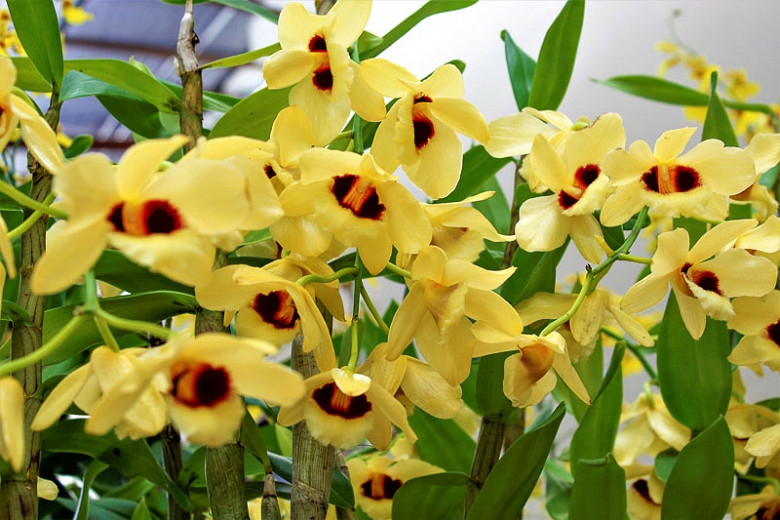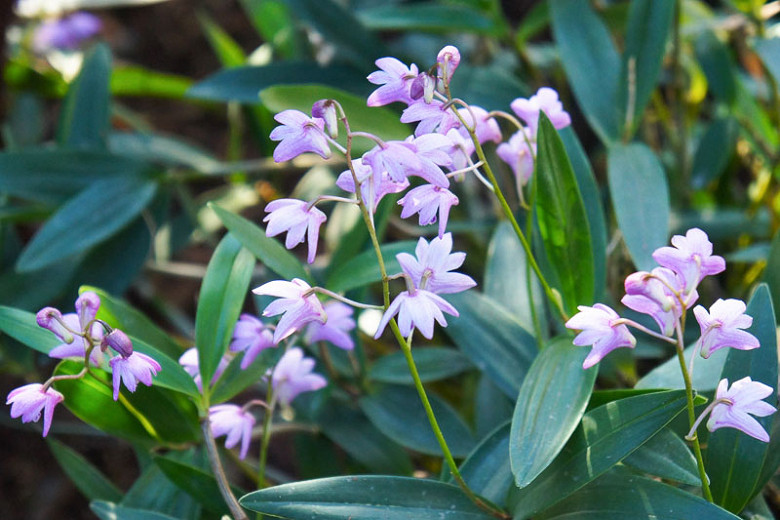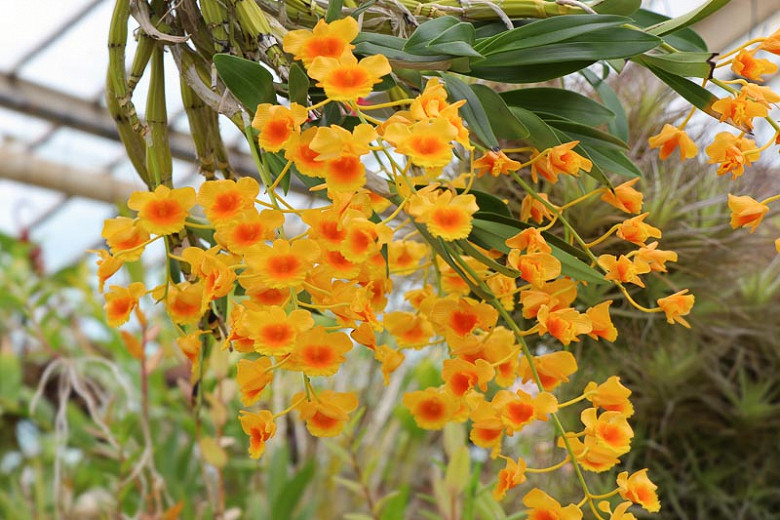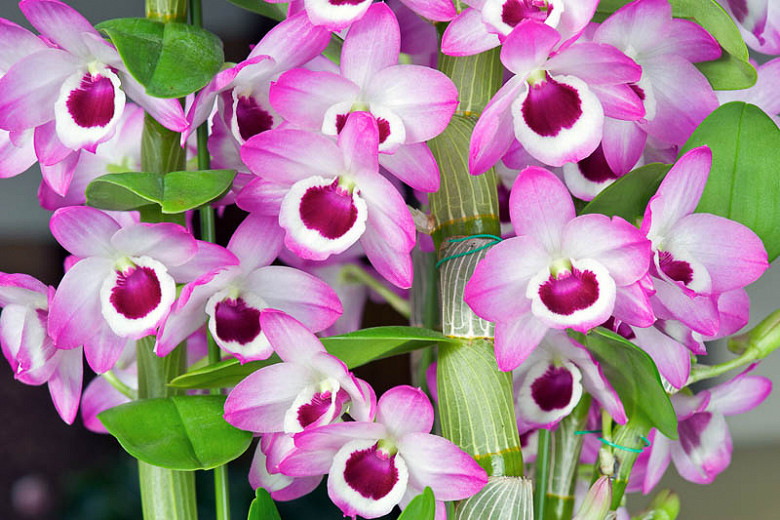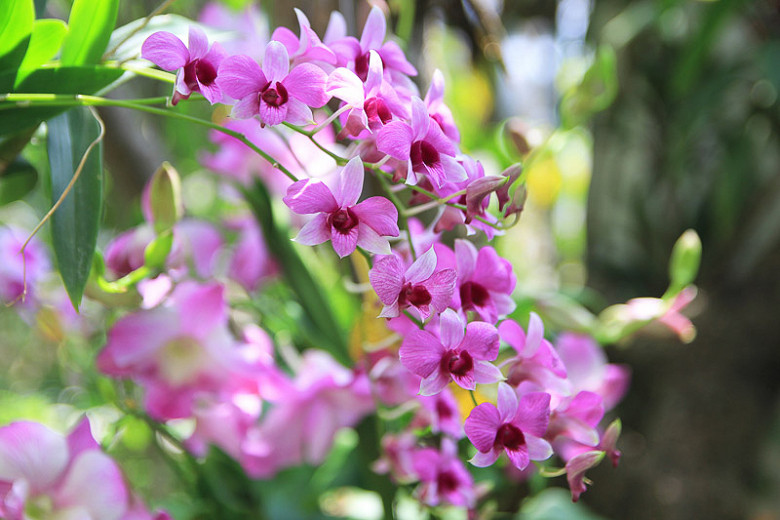Dendrobium anosmum (Unscented Dendrobium)
Dendrobium anosmum (Unscented Dendrobium) is a large epiphytic orchid boasting long, arching to pendulous canes, 4 ft. (120 cm), bearing oblong-elliptic, deciduous, fleshy, and glossy green leaves, 5-7 in. long (12-18 cm). In the spring, pleasantly fragrant, lavender flowers, up to 4 in. across (10 cm), with two burgundy spots on either side of the lip, arise from the leafless nodes.
Dendrobium anosmum (Unscented Dendrobium) is a large epiphytic orchid boasting long, arching to pendulous canes, 4 ft. (120 cm), bearing oblong-elliptic, deciduous, fleshy, and glossy green leaves, 5-7 in. long (12-18 cm). In the spring, pleasantly fragrant, lavender flowers, up to 4 in. across (10 cm), with two burgundy spots on either side of the lip, arise from the leafless nodes. Their powerful scent is reminiscent of raspberry, strawberry, rhubarb, or hyacinth. Native to New Guinea, the Philippines, and north to Sri Lanka and Thailand, Dendrobium anosmum can produce over flowers per pseudobulb if grown properly.
- Grows up to 3-10 ft. tall (90-300 cm).
- Grows in epiphytic orchid compost in bright indirect light with good ventilation.
- Needs a minimum night temperature of 61-68°F (16-20°C) and a daytime temperature of 78-86°F (26-30°C).
- Maintain high humidity (80-90% in summer, 70% in winter).
- This plant should be kept moist during the growing season. Water freely in summer, moderately in the fall, and very little in the winter and spring.
- Dendrobium anosmum needs a rest period during the winter months. It must be exposed to moderately low temperatures, 60°F (15°C), to induce flowering. Maintain high light during this period and reduce watering to just enough to keep the plant from shriveling. Fertilization can be reduced to quarter strength or stopped completely. Watering must be increased when the buds on the nodes start to swell for the best flowering.
- Feed once a week from spring to mid-summer with a high nitrogen fertilizer. Then use a high phosphorus fertilizer until the end of the fall.
- Propagate by division when the plant over-fills the pot.
- Repot immediately after flowering, when new roots begin to grow.
- Generally disease free. Keep an eye out for aphids, glasshouse red spider mites, and mealybugs.
- Native to Malaysia, Laos, Vietnam, Hong Kong, Philippines, Indonesia, and Papua New Guinea.
Tip for reblooming
- If a plant is healthy but does not produce flowers in a reasonable time, then increase the light, and your orchid should get back on track blooming regularly.
Requirements
| Hardiness | 11 – 12 |
|---|---|
| Plant Type | Orchids |
| Plant Family | Dendrobium – Orchids |
| Exposure | Partial Sun |
| Season of Interest | Spring (Early,Mid,Late) |
| Height | 3' – 10' (90cm – 3m) |
| Water Needs | Average |
| Maintenance | High |
| Soil Drainage | Well-Drained |
| Characteristics | Fragrant, Showy |
| Garden Uses | Patio and Containers |
